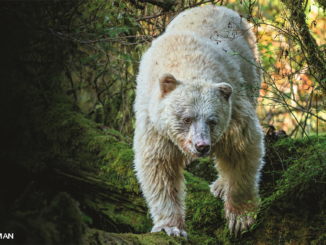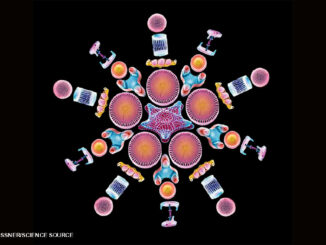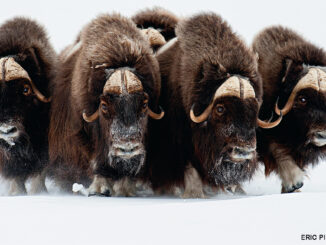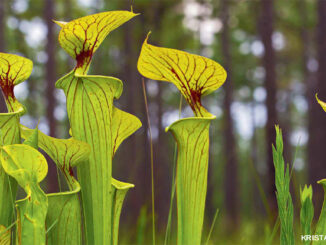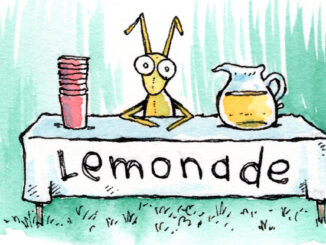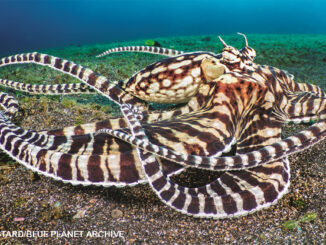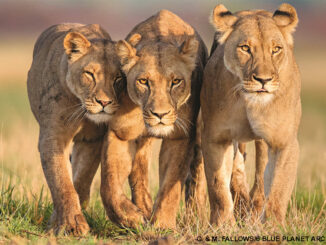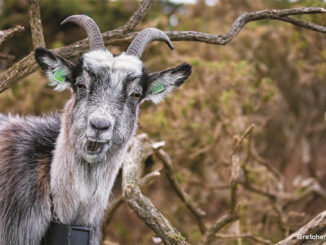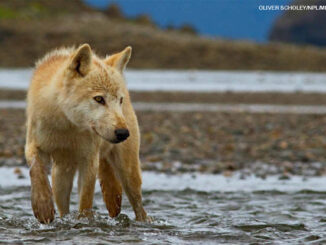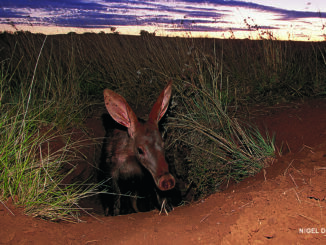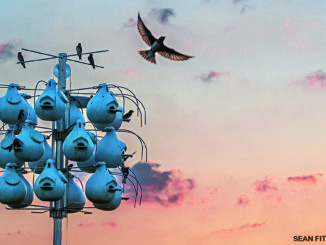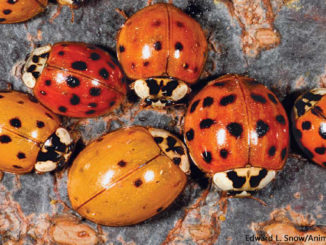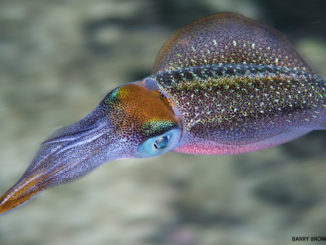
Seahorses
By Kathy KrankingSeahorses are actually fish, but they look like they’re trying not to be! With their horsy heads, monkey tails, and kangaroo pouches, they sure are oddballs of the fish family.
There are about 38 species of seahorses. They can be as short as a staple or as long as a hammer. But no matter what size they are, seahorses do just fine being odd. Their unusual parts help them survive. Take that horsy head with its long snout, for example.
A seahorse uses its snout as a straw to suck up tiny animals. A seahorse has no teeth, so it just swallows food whole — as many as 3,000 tiny creatures in a day. Talk about eating like a horse!
Also, a seahorse can move its eyes in opposite directions at the same time. So it can look for food with one eye and watch out for predators with the other.
A seahorse looks like a collection of spare animal parts! Check out the horsy head of the speckled seahorse at left and the monkey tails of the longsnout seahorses at right.
Poky Little Ponies
Most fish swim by wiggling their bodies and tails from side to side. But a seahorse swims by fluttering a tiny fin on its back. It uses fins on the sides of its head to help with steering and balance.
Seahorses are no racehorses: they’re the slowest of all fish. It would take more than a minute for some kinds to swim from your elbow to your fingertips. Since they’re such weak swimmers, seahorses spend most of their time just hanging on to things. That’s where those unusual “monkey tails” come in. The tails work as hands. Seahorses can curl them around coral, plants, or other things and hold on tight.
Hiding in Plain Sight
A seahorse’s body is unusual for a fish. It’s covered with bony plates, kind of like a suit of armor. Stretched over the plates is thin skin that has no scales. Since seahorses are mostly skin and bones, they have few predators. But some crabs, fish, birds, and other creatures don’t mind a crunchy meal. To stay safe from these predators, and to hide from prey, seahorses have a trick: They disappear! Most can change color to blend in with whatever they are clinging to. And some seahorses have spines, bumps, or other growths that help them match their “hitching posts,” as well.
Like all seahorses, these spiny seahorses like to “hang around,” holding on with their curly tails. They’ll grab on to whatever they can find — even each other.
Can you find the pygmy seahorse? This kind of seahorse comes in only two colors. The yellow ones live in yellow sea fans. And the pink ones live in pink sea fans. What perfect matches!
Mr. Mom
By far, the seahorse’s oddest part is its kangaroo pouch. But what’s even odder is that the seahorse dads are the ones with the pouches! That’s because, unlike other animals, male and female seahorses switch jobs: The dads have the babies!
When a male seahorse is ready to mate, he signals the female by filling his pouch with water. The female swims up and presses against him. She puts her egg-laying tube, called an ovipositor (oh-vuh-POZ-ihtur), into an opening in the male’s pouch. Then she lays her eggs in the pouch. After that, her job is done.
Now it’s the dad’s turn. For the next two to four weeks, depending on the species, he carries the eggs. Then, when the time is right, he begins bending his body back and forth, and sque-e-e-zing as hard as he can. He may do this for hours. Finally, a tiny head or tail pokes out of his pouch. The dad squeezes some more, and — pop! — out comes a baby seahorse, a miniature version of its mom and dad.
The male keeps popping out baby seahorses until his pouch is empty. Most seahorses have about 100 to 200 babies at a time. But some kinds have as few as five, and others, more than a thousand!
Now the babies are on their own. They’ll swim off slowly, looking for something to hang on to. Then, clutching with their tiny tails, these horsy little fishes — or fishy little horses — will be ready to begin their new lives.
With tails intertwined, two lined seahorses press against each other. Then the female (on the left) transfers her eggs to the male’s pouch. The male will carry them until the babies are ready to come out.
A baby pygmy seahorse is poking out of its dad’s pouch. Mini-models of their parents, the babies swim off to live on their own.
This article first appeared in the March 2010 issue of Ranger Rick magazine, by Kathy Kranking. (Click on each image above for a closer view of the story.)





